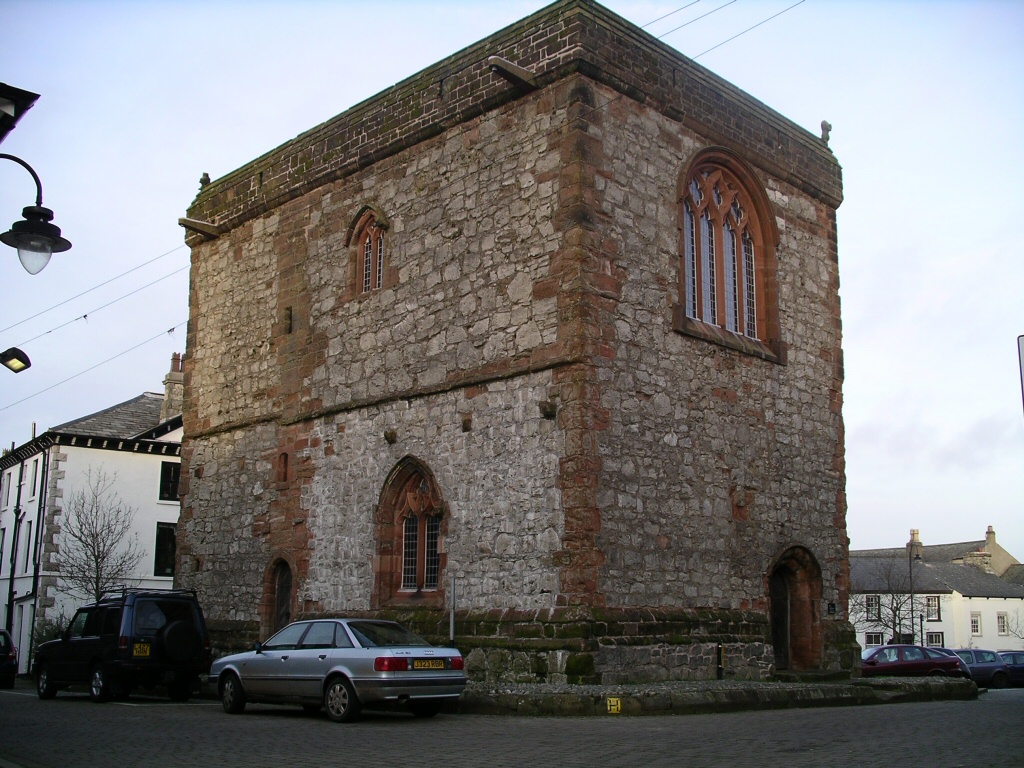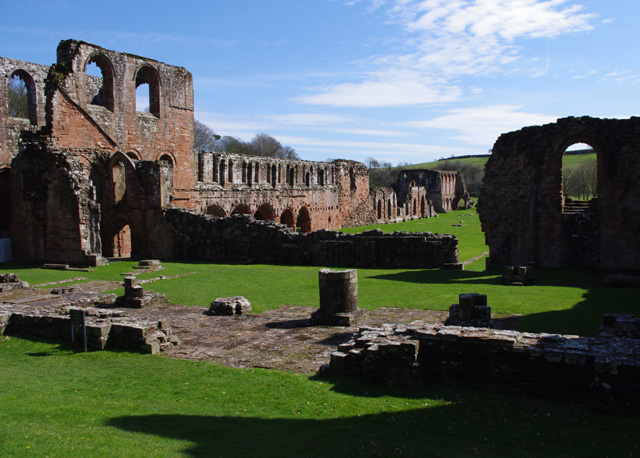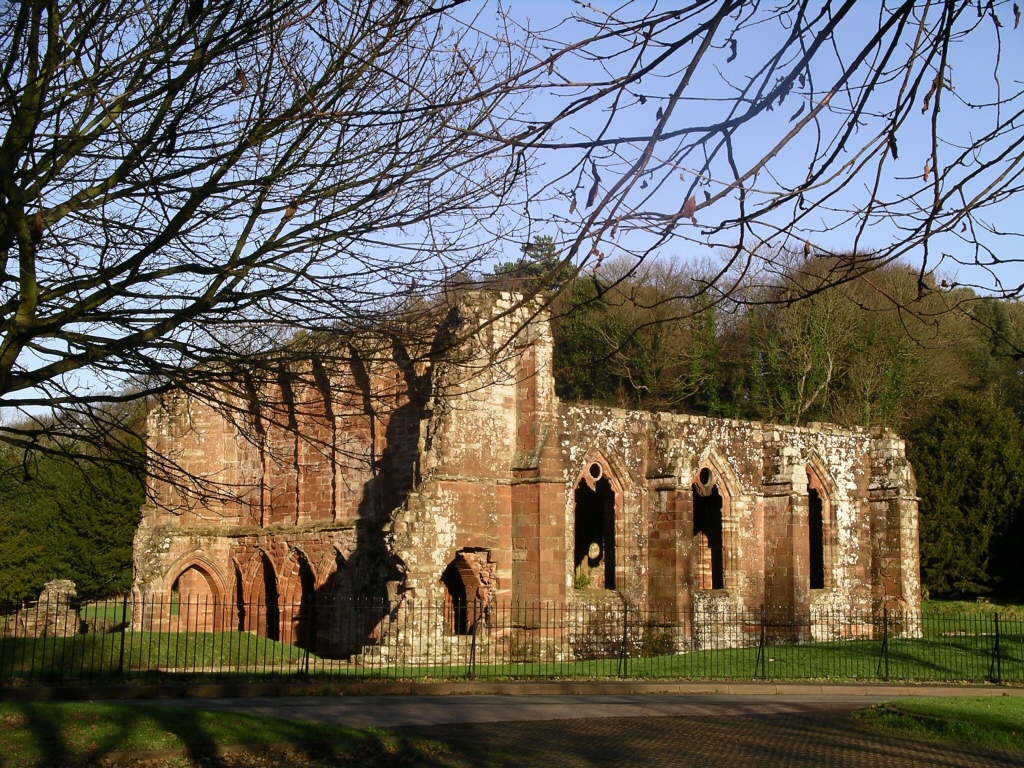|
Dalton-in-Furness
Dalton-in-Furness is a town and former civil parish in the Borough of Barrow-in-Furness, Cumbria, England. In 2011 it had a population of 7,827. It is located north east of Barrow-in-Furness. History Dalton is mentioned in the Domesday Book, written as "Daltune" as one of the townships forming the Manor of Hougun held by Tostig Godwinson, Earl of Northumbria. Historically, it was the capital of Furness. The ancient parish of Dalton covered the area which is now occupied by the borough of Barrow-in-Furness. The town is now in the civil parish of Dalton Town with Newton. Historically a part of Lancashire, the town is associated with a number of famous artists, including George Romney. In 1961 the parish had a population of 10,316. Dalton in Furness was formerly a civil parish, it was abolished in 1974 and became an unparished area, on 1 April 1987 the unparished area was abolished to form the parishes of "Askam and Ireleth", "Dalton Town with Newton" and "Lindal and Marton". The ... [...More Info...] [...Related Items...] OR: [Wikipedia] [Google] [Baidu] |
Askam And Ireleth
Askam and Ireleth is a civil parish close to Barrow-in-Furness in the county of Cumbria, in North West England. Historically part of Lancashire, it originally consisted of two separate coastal villages with different origins and histories which, in recent times, have merged to become one continuous settlement. In the 2001 census the parish had a population of 3,632, reducing at the 2011 census to 3,462. Ireleth has its origins as a mediaeval farming village clustered on the hillside overlooking the flat sands of the Duddon Estuary. Askam was established following the discovery of large quantities of iron ore near the village in the middle of the 18th century. The pair originally fell within the boundaries of the Hundred of Lonsdale 'north of the sands' in the historic county of Lancashire, but following local government reforms in 1974 became part of the county of Cumbria, along with the rest of Furness. The nearby River Duddon estuary and surrounding countryside have made ... [...More Info...] [...Related Items...] OR: [Wikipedia] [Google] [Baidu] |
Barrow-in-Furness
Barrow-in-Furness is a port town in Cumbria, England. Historically in Lancashire, it was incorporated as a municipal borough in 1867 and merged with Dalton-in-Furness Urban District in 1974 to form the Borough of Barrow-in-Furness. In 2023 the borough will merge with Eden and South Lakeland districts to form a new unitary authority; Westmorland and Furness. At the tip of the Furness peninsula, close to the Lake District, it is bordered by Morecambe Bay, the Duddon Estuary and the Irish Sea. In 2011, Barrow's population was 56,745, making it the second largest urban area in Cumbria after Carlisle. Natives of Barrow, as well as the local dialect, are known as Barrovian. In the Middle Ages, Barrow was a small hamlet within the parish of Dalton-in-Furness with Furness Abbey, now on the outskirts of the town, controlling the local economy before its dissolution in 1537. The iron prospector Henry Schneider arrived in Furness in 1839 and, with other investors, opened the Furness Railwa ... [...More Info...] [...Related Items...] OR: [Wikipedia] [Google] [Baidu] |
George Romney (painter)
George Romney ( – 15 November 1802) was an English portrait painter. He was the most fashionable artist of his day, painting many leading society figures – including his artistic muse, Emma Hamilton, mistress of Lord Nelson. Early life and training Romney was born in Beckside in Dalton-in-Furness, Lancashire (now in Cumbria), the 3rd son (of 11 children) of John Romney, cabinet maker, and Anne Simpson. Raised in a cottage named High Cocken in modern-day Barrow-in-Furness, he was sent to school at nearby Dendron. He appears to have been an indifferent student and was withdrawn at the age of 11 and apprenticed to his father's business instead. He proved to have a natural ability for drawing and making things from wood – including violins (which he played throughout his life). From the age of 15, he was taught art informally by a local watchmaker called John Williamson, but his studies began in earnest in 1755, when he went to Kendal, at the age of 21, for a 4-year appr ... [...More Info...] [...Related Items...] OR: [Wikipedia] [Google] [Baidu] |
Dalton Town With Newton
Dalton Town with Newton is a civil parish in the Barrow-in-Furness district, in the county of Cumbria, England. The parish includes the town of Dalton-in-Furness and the hamlet of Newton. In 2011 it had a population of 8,125. The parish touches Aldingham, Askam and Ireleth, Lindal and Marton and Urswick. Features There are 70 listed buildings in Dalton Town with Newton Dalton Town with Newton is a civil parish in the Borough of Barrow-in-Furness in Cumbria, England. The parish contains the market town of Dalton-in-Furness, the hamlet of Newton-in-Furness, Newton and surrounding countryside. The civil parish c .... History The parish was formed in 1987 from part of the unparished area of Dalton-in-Furness. References Civil parishes in Cumbria Barrow-in-Furness {{Cumbria-geo-stub ... [...More Info...] [...Related Items...] OR: [Wikipedia] [Google] [Baidu] |
Dalton Railway Station
Dalton is a railway station on the Furness Line, which runs between and . The station, situated north-east of Barrow-in-Furness, serves the town of Dalton-in-Furness in Cumbria. It is owned by Network Rail and managed by Northern Trains. History Construction of the Furness Railway was authorised in May 1844. It was opened in stages: the line between Dalton and Barrow was in use (on an unofficial basis) by 3 June 1846, as was the line between Salthouse Junction and . A line between Dalton and Kirkby was opened on 12 August 1846, when the earlier sections were officially opened. Dalton station was opened to passengers on 24 August 1846. An eastward extension from Dalton to was authorised on 27 July 1846; it did not open until April 1854. The station once had three platforms; however, only two are in use today. The disused one is adjacent to the Barrow-bound platform, from which it is separated by a wooden fence. The area is now very overgrown and inaccessible to the public. ... [...More Info...] [...Related Items...] OR: [Wikipedia] [Google] [Baidu] |
Cumbria
Cumbria ( ) is a ceremonial and non-metropolitan county in North West England, bordering Scotland. The county and Cumbria County Council, its local government, came into existence in 1974 after the passage of the Local Government Act 1972. Cumbria's county town is Carlisle, in the north of the county. Other major settlements include Barrow-in-Furness, Kendal, Whitehaven and Workington. The administrative county of Cumbria consists of six districts ( Allerdale, Barrow-in-Furness, Carlisle, Copeland, Eden and South Lakeland) and, in 2019, had a population of 500,012. Cumbria is one of the most sparsely populated counties in England, with 73.4 people per km2 (190/sq mi). On 1 April 2023, the administrative county of Cumbria will be abolished and replaced with two new unitary authorities: Westmorland and Furness (Barrow-in-Furness, Eden, South Lakeland) and Cumberland ( Allerdale, Carlisle, Copeland). Cumbria is the third largest ceremonial county in England by area. It i ... [...More Info...] [...Related Items...] OR: [Wikipedia] [Google] [Baidu] |
Lindal And Marton
Lindal-in-Furness is a village on the Furness peninsula of Cumbria, England. Historically in Lancashire, it lies eight miles to the north-east of Barrow-in-Furness, on the A590 trunk road. The civil parish is Lindal and Marton which had a population of 755 at the 2011 Census. The land around Lindal, a small grange belonging to Furness Abbey in the Middle Ages, had long been known for its iron ore. In the 1840s and 1850s, larger deposits were discovered in the area and Lindal became one of many mining villages supplying the iron ore for what was then one of the world's largest steelworks, in Barrow. Lindal was originally built around a tarn, which was later filled in with spoil from the mines to create a village green. The iron mining companies built houses, chapels, reading rooms, a public hall and a school in Lindal during the period from the mid-19th century to early 20th century. The iron ore production declined in face of increased international competition and dwindling ... [...More Info...] [...Related Items...] OR: [Wikipedia] [Google] [Baidu] |
Borough Of Barrow-in-Furness
Barrow-in-Furness is a local government district with borough status in Cumbria, England. It is named after its main town, Barrow-in-Furness. Other settlements include Dalton-in-Furness and Askam-in-Furness. It is the smallest district in the county, but is the most densely populated, with 924 people per square kilometre. The population was 71,980 in 2001, reducing to 69,087 at the 2011 Census. In July 2021 the Ministry of Housing, Communities and Local Government announced that in April 2023, Cumbria will be reorganised into two unitary authorities. Barrow-in-Furness Borough Council is to be abolished and its functions transferred to a new authority, to be known as Westmorland and Furness, which will cover the current districts of Barrow-in-Furness, Eden and South Lakeland. In April 2022 Gareth Davies became the first person to run every single street in the Borough of Barrow-In-Furness. Covering all 1,026 streets over an end to end distance of 201 miles. Background The a ... [...More Info...] [...Related Items...] OR: [Wikipedia] [Google] [Baidu] |
Barrow-in-Furness (borough)
Barrow-in-Furness is a local government district with borough status in Cumbria, England. It is named after its main town, Barrow-in-Furness. Other settlements include Dalton-in-Furness and Askam-in-Furness. It is the smallest district in the county, but is the most densely populated, with 924 people per square kilometre. The population was 71,980 in 2001, reducing to 69,087 at the 2011 Census. In July 2021 the Ministry of Housing, Communities and Local Government announced that in April 2023, Cumbria will be reorganised into two unitary authorities. Barrow-in-Furness Borough Council is to be abolished and its functions transferred to a new authority, to be known as Westmorland and Furness, which will cover the current districts of Barrow-in-Furness, Eden and South Lakeland. In April 2022 Gareth Davies became the first person to run every single street in the Borough of Barrow-In-Furness. Covering all 1,026 streets over an end to end distance of 201 miles. Background The ar ... [...More Info...] [...Related Items...] OR: [Wikipedia] [Google] [Baidu] |
Manor Of Hougun
The Manor of Hougun is the historic name for an area which now forms part of the county of Cumbria in North West England. Of the three most northern counties of England surveyed in the Domesday Book of 1086 (Northumbria, Durham and Cumbria), only the southern band of land in the south of Cumbria was recorded. The westernmost entries for Cumbria, covering the Duddon and Furness Peninsulas are largely recorded as part of the ''Manor of Hougun''. The entry in Domesday Book covering Hougun refers to the time (ca. 1060) when it was held by Tostig Godwinson (c. 1026 – 25 September 1066), Earl of Northumbria. Location The exact location of Hougun has been long disputed and Millom is often suggested, although High Haume near Dalton-in-Furness has also been proposed, given that it was recorded in 1336 as Howehom. It has also been suggested that the centre of the district was Furness, and that the territory included the Millom area, plus part or all of Cartmel – what would later be the ... [...More Info...] [...Related Items...] OR: [Wikipedia] [Google] [Baidu] |
Furness Abbey
Furness Abbey, or St. Mary of Furness, is a former Catholic monastery located to the north of Barrow-in-Furness, Cumbria, England. The abbey dates back to 1123 and was once the second-wealthiest and most powerful Cistercian monastery in the country, behind Fountains Abbey, prior to its dissolution during the English Reformation.History of the abbey The abbey contains a number of individual Grade I s and is a . History of the abbey Early history [...More Info...] [...Related Items...] OR: [Wikipedia] [Google] [Baidu] |
Dalton Castle - Dalton-in-Furness, Lancashire
Dalton may refer to: Science * Dalton (crater), a lunar crater * Dalton (program), chemistry software * Dalton (unit) (Da), the atomic mass unit * John Dalton, chemist, physicist and meteorologist Entertainment * Dalton (Buffyverse), minor character from ''Buffy the Vampire Slayer'' television series * Dalton (band), Danish musical band * Dalton (Chrono Trigger), non-playable main character in ''Chrono Trigger'' * The Dalton Brothers (band), a parodistic country band created by U2 * The Daltons (''Lucky Luke''), fictional outlaws in ''Lucky Luke'' comic book series * Dalton Academy, a fictional school in the TV series ''Glee'' * Dalton Russell, character played by Clive Owen in 2006 film ''Inside Man'' * ''The Daltons'' (2010 TV series), a French animated TV series Places United Kingdom * Dalton-le-Dale, County Durham, England * Dalton-in-Furness, Cumbria (historically in Lancashire), England * Dalton, Cumbria, near Burton-in-Kendal (historically in Lancashire), England * Da ... [...More Info...] [...Related Items...] OR: [Wikipedia] [Google] [Baidu] |






